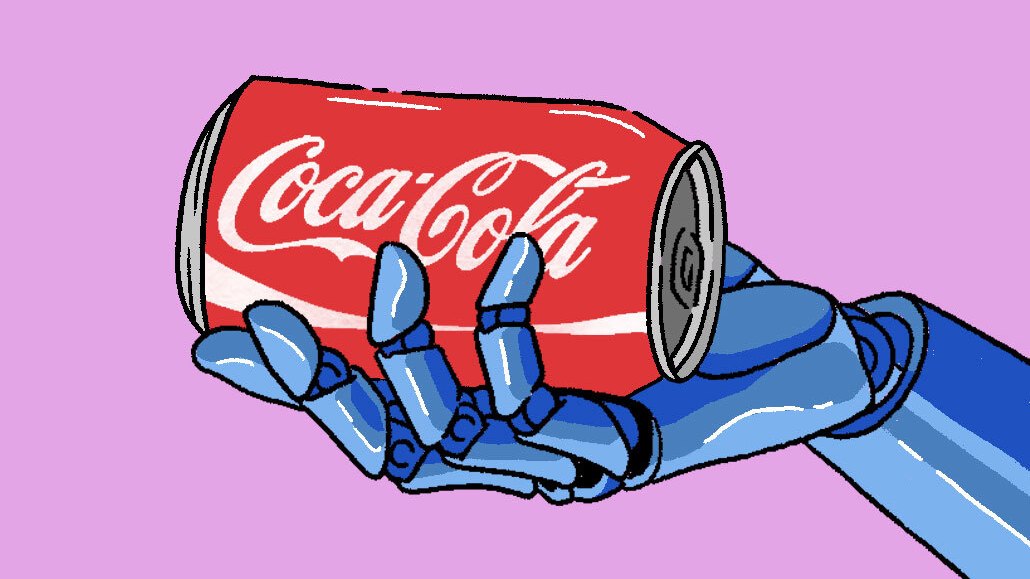Coca-Cola set to continue generative AI efforts with holiday-season marketing push

This upcoming holiday season Coca-Cola is hoping to win over users to its AI platform which allows them to create customized holiday greeting cards with prompts. The Create Real Magic platform was built for Coca-Cola by OpenAI and Bane & Company using assets from the Coca-Cola archive. For the greeting card effort, iconic Coca-Cola holiday artwork is being used.
Coca-Cola, this past March, began asking its fans to use the Create Real Magic platform to create artwork for the brand with the potential for the final product to appear on billboard ads in New York and London. The callout had fans spending more than seven minutes and twelve seconds each and creating more than 120,000 images.
The beverage behemoth believes that if it can offer an interactive, easy-to-use tool that appeals to consumers, particularly younger tech savvy consumers, it can help the brand retain relevance.
“We’re living in the age of AI,” said Pratik Thakar, Coca-Cola’s senior director of generative AI; he moved into the role this past summer. “We want to stay ahead of the curve. We want to stay innovative. [What we’re doing is] taking our Create Real Magic platform and enhancing it with new technology, new features and making it more relevant for holidays.”
Coca-Cola worked with creators from its Real Magic Creative Academy — the brand held a three day symposium for digital artists using AI earlier this year — to improve the platform and make it more user-friendly for the holiday. The stunt, which is available now and will run through the holidays, allows users to input a prompt, select various images and make a customized holiday greeting card. Users can then download the card or send directly from the platform to their friends and family. The initiative is just one example of the way the brand is working to create more interactive experiences for potential customers and fans.
Other than AI, Coke is exploring experiences like the Sphere, gaming and music to find ways to connect its brand with culture beyond traditional advertising vehicles. It’s no surprise that the brand would do so as marketers recognize that historical advertising models are not delivering what they used to given the fragmented media and social landscape. With that being the case, marketers have to offer more to get consumers to pay attention.
The company has been working to transform its marketing and move from “the interruption model to experience and engagement,” said Thakar.
“As media gets more fragmented and retaining the attention of audiences increasingly challenging, brands are looking to innovation to insert themselves into the conversation,” said Lydia Corin, director of creative partnerships at creative studio The Mayda Creative Co.
Corin continued: “Both legacy and challenger brands recognize that culturally poignant content will always trump traditional advertising. This is an incredibly smart move for Coca-Cola who, in the past, leveraged the heritage of its previous holiday campaigns to engage consumers during the holiday season.”
Justin Booth-Clibborn, creative strategist and former chief executive producer at creative shop Psyop, agreed. “Aside from keeping Coca-Cola in the immense cultural conversation around AI, this speaks to the core issue of how brands are looking for ways to strengthen their relationships with consumers beyond the transactional, and beyond traditional advertising.” Booth-Clibborn added that by entertaining without immediately asking for a sale, the company is “building brand sentiment, credibility and trust over time.”
Aside from the free tool, the brand is incentivizing people to use it once again with the potential for their artwork to appear on billboards. While the previous effort offered two spots, the brand is planning to create 20 billboards in various countries to incentivize people to spend time on the platform and create holiday cards. “People love their artwork going on those famous, iconic billboards,” said Thakar.
To gauge the success of the effort, Coca-Cola will track how many images are created and shared, how much time people spend on the platform and how many greeting cards are generated.
When marketers are able to make an experience where users will want to share the brand’s content, that’s a win for the brand, said Eunice Shin, partner at Prophet, a growth strategy consulting firm. Shin cited Spotify’s Wrapped feature, which serves as an annual marketing moment for the platform, as an example of brand content that’s gone viral because it’s customized and semi-user generated.
“If it’s a good product people will do it,” said Shin. “It all comes back to activation and execution. If there’s social excitement and momentum, if it’s easily shareable, then there’s potential there.”
More in Marketing

Pandora is betting on AI agents to scale service and emotional selling during the peak holiday season
Pandora is using AI agents to scale customer service and replicate emotional in-store selling online, just as peak season puts pressure on margins and teams.

Rembrand’s CEO wants to grow virtual ad placements in streaming, and he’s looking elsewhere for models
Omar Tawakol wants to improve advertising within the streaming world, and is working with advertisers and publishers to improve that experience.

Marketers are keen to use generative AI in ad campaigns, but hidden costs lurk
Marketers across the industry want to use AI to cut down on time spent in creative production. It’s not so simple in practice.







